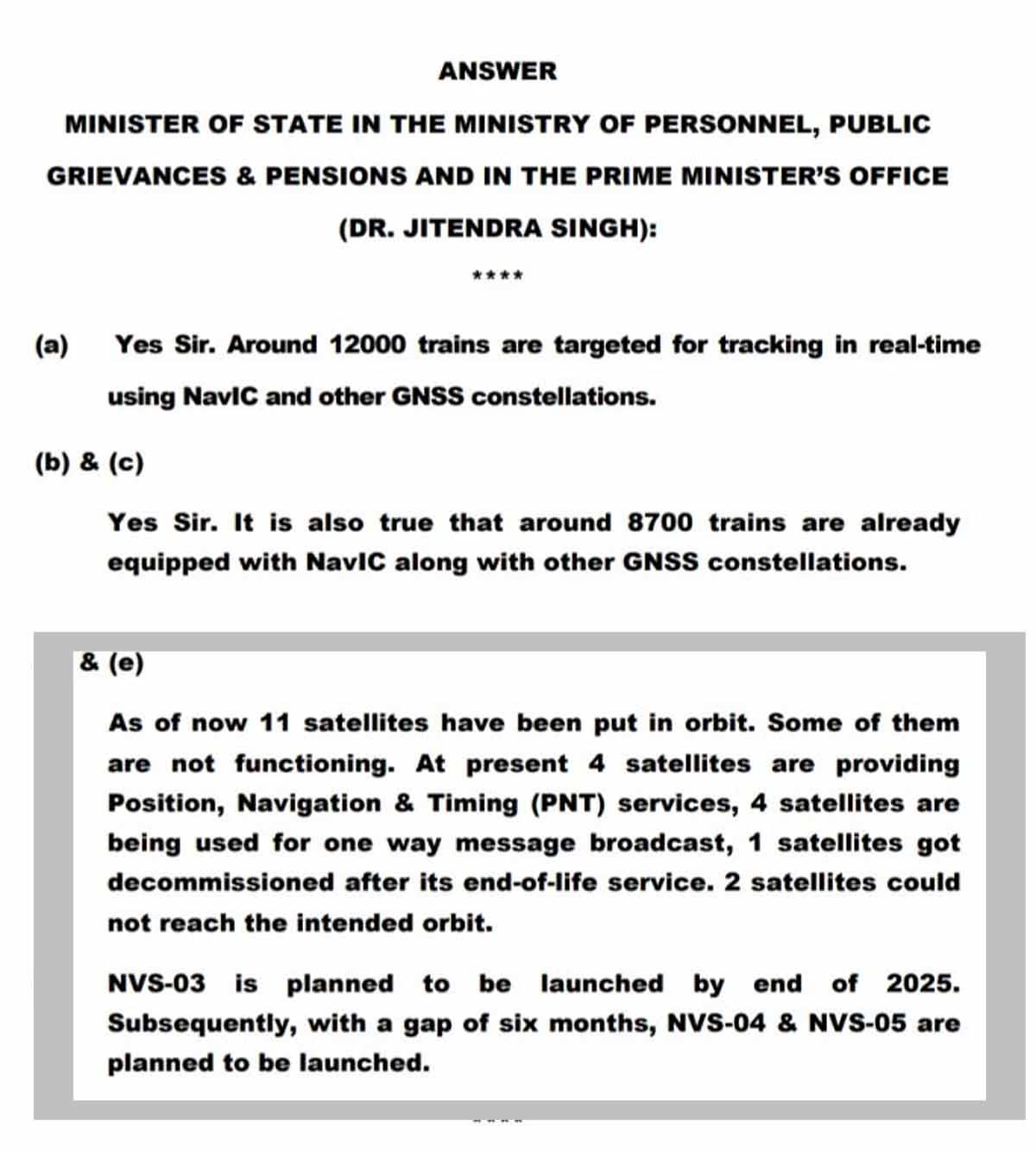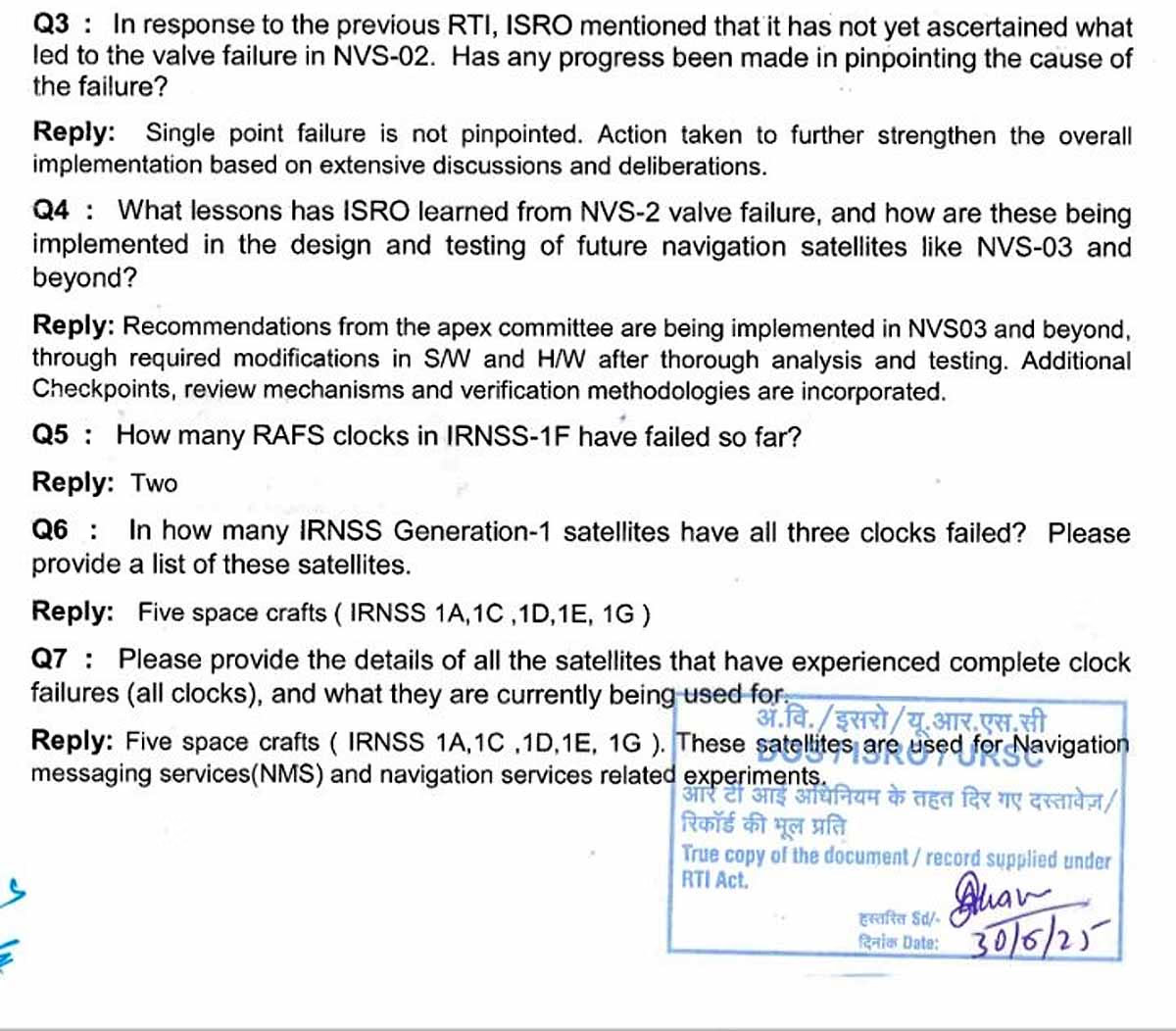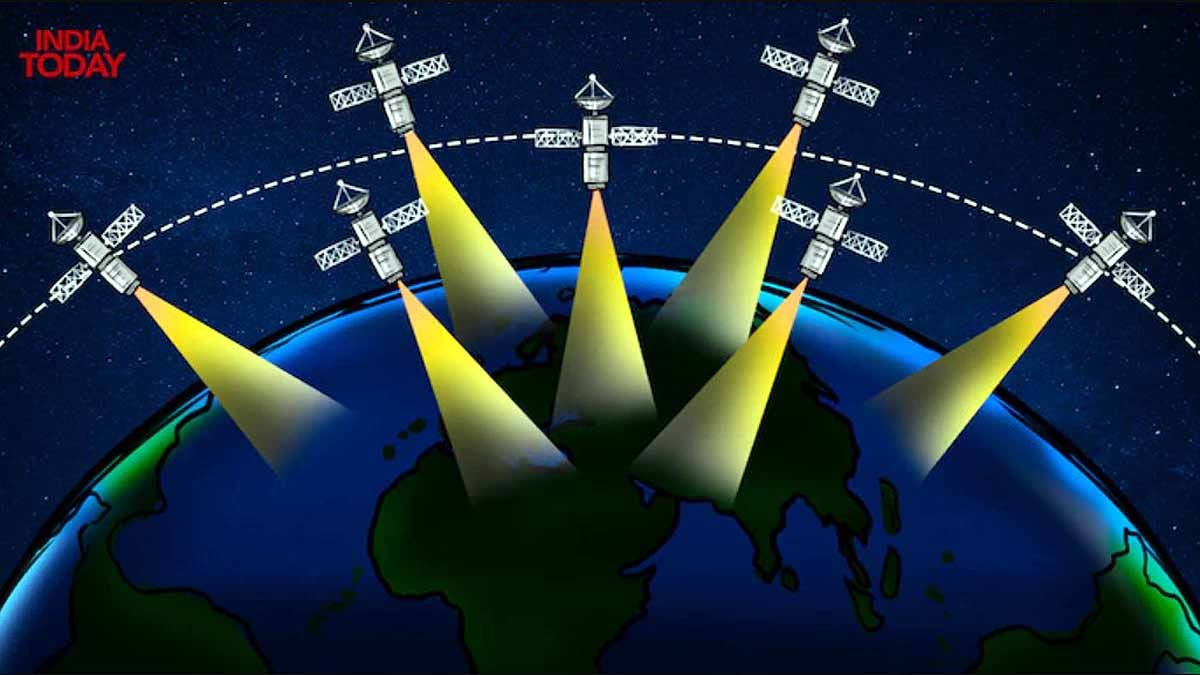India's Indigenous Navigation System, NavIC, once hailed as India's version of GPS, faces challenging times. The Indian Space Research Organisation's (ISRO) efforts are now nearing failure.
Out of the 11 satellites launched, only 4 are operational. The rest have either malfunctioned or are completely shut down. The government has acknowledged this both in Parliament and through Right to Information (RTI) disclosures. Let's delve into what NavIC is, why it's failing, and the potential impact on India.
What is NavIC?
NavIC, or Navigation with Indian Constellation, is India's regional navigation satellite system, part of the Indian Regional Navigation Satellite System (IRNSS). Initiated by ISRO in 2006, it aimed to free India from dependence on foreign GPS services, such as those provided by the United States.
Also read: ISRO's NVS-02 Mission: Satellite Stuck in Orbit, Propulsion System Failure
The need for NavIC emerged starkly during the 1999 Kargil War when the U.S. refused to provide GPS data. NavIC offers precise location, navigation, and timing (PNT) services within India and up to 1500 kilometers beyond its borders. The goal is to provide a domestic system for both civilian and military use.

Source: aajtak
Satellites: 11 satellites were launched, from IRNSS-1A to 1K and the NVS series.
Coverage: Extends up to 1500 km around India.
Launch Timeline: From 2013 to 2025.
Cost: Approximately 22.5 billion INR.
What happened to NavIC?
NavIC started with promise, but its current state is troubling. Of the 11 satellites, only 4 are delivering PNT services, with the remaining 7 either completely failed or only partially operational. Reasons include...
Atomic Clock Failures
Each satellite houses 3 atomic clocks to maintain precise time. Several satellites, like IRNSS-1A, 1C, and 1D, have experienced clock failures. These clocks were sourced internationally, and their quality faltered.
Also read: Why ISRO-NASA's NISAR is being called the 'Superhero from Space'... Alerting every change on Earth
Launch Failures
Both IRNSS-1H in 2017 and NVS-02 in 2025 failed at launch. IRNSS-1H's rocket shield didn't deploy, and NVS-02's engine malfunctioned.

Source: aajtak
Outdated Satellites
IRNSS-1B has reached its 10-year lifespan and could cease functioning soon.
IRNSS-1F's performance is hampered, with 2 out of 3 clocks failing.
Technical Issues:
Failure of NVS-02's engine left it unable to reach the correct orbit, affecting PNT services.
Current Status:
Only IRNSS-1B, 1F, 1I, and NVS-01 (IRNSS-1J) remain fully operational. The rest are either used for messaging services (NMS) or completely shutdown.
Also read: India is developing three small modular reactors... 60-month plan blueprint unveiled
Government's Response
The government has recently admitted NavIC's poor status in Parliament and in RTI responses...
4 Satellites Operational: IRNSS-1B, 1F, 1I, and NVS-01.
Concerns: 1B is at the end of its life, and 1F has partial malfunctions.
Future Plan: The government announced the launch of NVS-03, NVS-04, and NVS-05 by 2026, yet clarity on their operational timelines is lacking.
The Importance of NavIC
NavIC was designed to eliminate India's dependency on foreign systems, especially for military applications. Its benefits include...
Civilian Use: Precise data for mobile devices, car navigation, and agriculture.
Military Use: Missile guidance, ship navigation, and location tracking during warfare.
Disaster Management: Supports rescue operations during floods or earthquakes.
Economy: Companies like Qualcomm planned to incorporate NavIC in mobile chips.
Potential Impacts?
Security Risk: Total failure could force reliance back on GPS, posing threats during conflicts.
Economic Loss: Despite spending 22.5 billion INR, the system's failure indicates wasted taxpayer money.
Reliability Concerns: ISRO's technical capabilities are questioned, given the continuous satellite failures.
Commercial Use: Mobile and automotive industries may hesitate to adopt NavIC due to uncertain signal accuracy.
Future Plans
ISRO has committed to launching the new NVS series, NVS-03, 04, and 05, by 2026, encompassing...
Advanced Technology: Indigenous atomic clocks and improved engines.
L1 Band: For improved mobile and civilian applications.
Security: Long code support for military applications.
The pressing question remains: Can ISRO accelerate its launch pace and expand its budget? The public calls for increased government support for ISRO.




